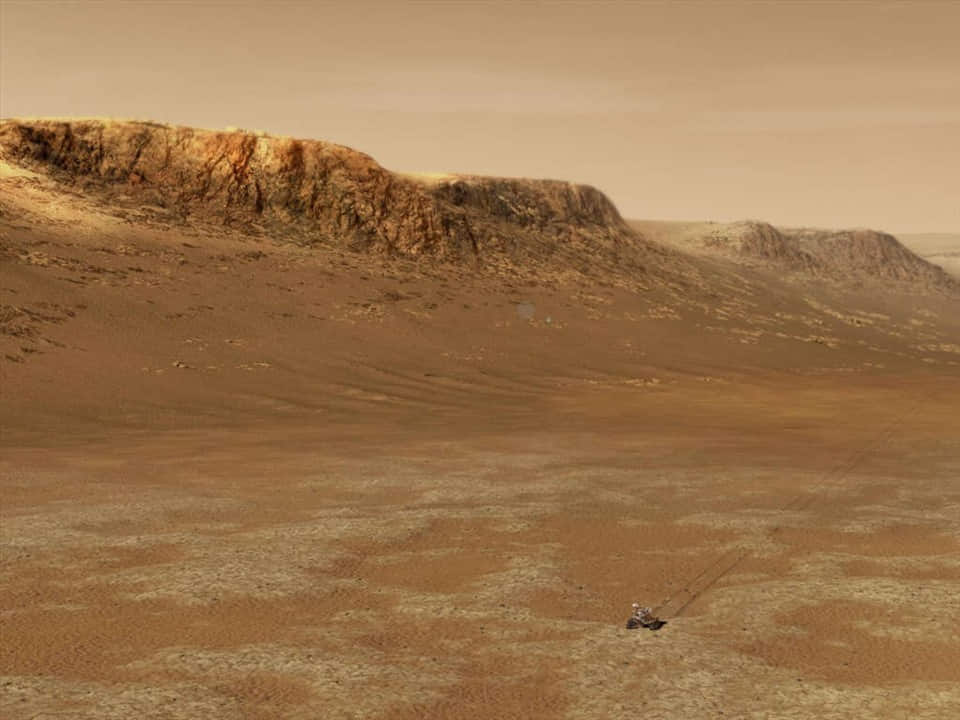Deep in the forests of southeastern Siberia, Patomisky Crater is a mysterious mound of crumbled limestone protruding from the vegetation on the hillside. To date, people still cannot determine its clear origin.
When a young geologist went on a geological mapping expedition north of the Irkutsk region in Siberia, he encountered something so special and mysterious that, even more than six decades later, the scientist still confused about it – Patomskiy Crater.

It is August 1949. Geologist Vadim Kolpkov has just heard a story from the locals about a strange place in the forest called the “Fire Eagle’s Nest”. Legend warns of illness, disappearance and even death for those who venture close (in fact, in 2005, the leader of the mission to the actual crater died suddenly near). Unfazed by the warnings, Kolpkov climbed the hill and was shocked by what he saw from afar. He then noted:
“The first time I saw the crater, I thought I was going crazy from the heat. And actually, an extremely strange shaped object, the size of a 25-storey building with the top cut off, was in the middle of the forest. was a rather surprising discovery.”
“From a distance it looked like a pile of slag in a mine, just white. I even thought: There would be workers there, but in reality there were no labor camps in the area.”
“My second thought was an archaeological artifact. But the local Evenks and Yakuts, with all due respect to them, could not have built stone pyramids, because they had no resources.” human resources as well as necessary scientific knowledge”.

“I got closer and realized the mysterious hill was not man-made. It looked like a perfectly round crater with a height of 70 meters. But the volcano did not appear on the border of the Yakutia region and Irkutsk for several million years. And the crater is quite new. It is located on the slope of a hill overgrown with pine trees.”
“Trees have not yet grown on the slopes and in the crater, the wind has not yet brought the soil in. And another mystery – a semicircular dome-shaped cavity with a diameter of 15 meters in the center of the crater. In the mountains fire, even if extinguished, such domes cannot exist.”
The origin of the distinctive rock formation rising from the dense taiga on the slopes of the Patom Plateau remains unknown 70 years later, although There have been many expeditions and scientific research. It has a base diameter of about 160 meters and a height of about 40 meters. In the center of the circular limestone block there is a smaller mound with a height of about 12 meters.
Some say the cause was a meteorite impact, a volcanic eruption or even a UFO. However, none of these hypotheses has been conclusively proven. The crater is estimated to be about 300 years old, based on the age of the trees growing nearby.

Speaking of trees… Some of them are really big and grow unusually fast compared to the surrounding vegetation. In particular, scientists have discovered abnormalities in the annual circle formation of trees over 200 years old. Several trees fell or broke in 1841-1842, and showed shrinking annual rings leading to blight.
The complexity deepens when analyzing tree rings near the crater. That same year, 1842, tree rings increased significantly, remaining surprisingly high for about 40 years before shrinking significantly.
“I just know of a similar case”. “After the radiation-induced Chernobyl disaster, plant growth increased significantly. Maybe we are dealing with something similar here? That’s right, now the background radiation in the crater is But maybe at some point, short-lived radioactive isotopes suddenly appeared here, they gathered, they decayed, and then the radioactivity dropped to natural levels? “.
Since discovering the tree’s anomaly, Voronin and his colleagues have conducted numerous experiments and analyzes in the crater, indicating that it is most likely a unique volcano, the only one of its kind. the best of its kind in this territory.

“Of course, there are still many strange things about the crater. There is still no unified and definitive consensus on this issue. Together with geomorphologists, we decided that this is the most likely version most likely,” he told the Siberian Times.
Previously, Voronin suggested that a UFO could have crashed there with its nuclear engine still on – a theory for which he was widely criticized.
But an analysis of the trees that Voronin sent to the Budker Institute for Nuclear Research in Novosibirsk showed a sudden increase in the levels of strontium and uranium in the growth rings. This level is 3 to 4 times higher than normal and lasts about 20 years before returning to normal. If it was a ‘gas volcano’, where did the source of this radiation come from?
So what is the secret behind these giant trees? Are they the result of some natural phenomenon or something more mysterious? Could they be related to the origin of the crater? These are some of the questions that remain unanswered and that make the Patomskiy crater one of the world’s most fascinating natural wonders.





